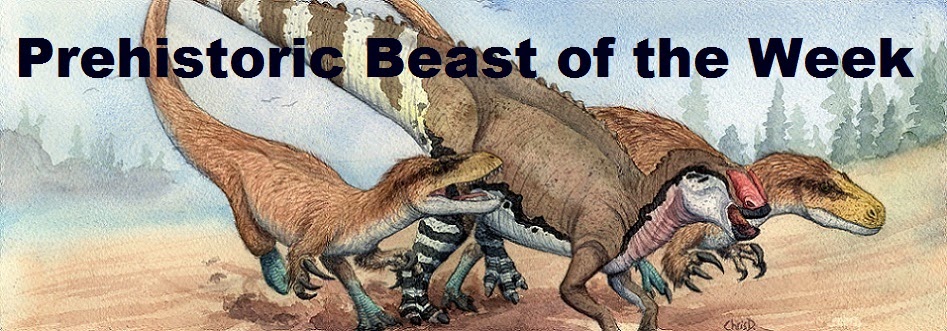This wee we will look at a unique kind of prehistoric fish that swam in rivers and lakes while some of the largest dinosaurs walked on land. Check out Lepidotes!
 |
| Watercolor reconstruction of Lepidotes gigas by Christopher DiPiazza. |
Lepidotes was a genus of heavily scaled bony fish that lived in what is now Europe and North America during the early Jurassic between 180 and 175 million years ago. The genus may have even persisted into the Early Cretaceous, as recent as 115 million years ago, but the identity of these later species has been proposed to be from a separate genus by some experts. In life Lepidotes lived in mostly fresh water and some shallow salt water environments, and would have eaten small invertebrates. The genus name translates to "covered with scales" in Greek. From nose to tail most Lepidotes grew to about a foot in length (30 cm).
 |
| Fossil of Lepidotes gigas (photo credit: Ghedo) Note the hard scales, which fossilized extra dark compared to the other parts of the fish. |
Lepidotes is most known for its scales, which are by far the most commonly fount fossil from it, and were particularly hard and shiny. Its closest living relatives are gars, which also have extremely tough armored scales. Like Gars, the scales of Lepidotes acted as as armor against predators. Gars, however, are also known for their long bodies and snouts, lined with pointed teeth, while Lepidotes was convergently more shaped like a carp, with a taller, rounder body, and proportionally small round mouth.
In the back of Lepidotes' mouth were rounded teeth, ideal for crushing shelled invertebrates on which it likely preyed on when alive. Another interesting characteristic of Lepidotes was that both the upper and lower jaws were not attached directly to the rest of its skull, allowing it to have stretched its mouth out into a tube-like structure while sucking up food. In addition to its body shape, this is another trait present in modern carp.
References
Agassiz, L. (1832), Untersuchungen über die fossilen Fische der Lias-Formation. Jahrbuch für Mineralogie, Geognosie, Geologie und Petrefaktenkunde
Frederickson, Joseph A.; Lipka, Thomas R.; Cifelli, Richard L. (2018-08-28). "Faunal composition and paleoenvironment of the Arundel Clay (Potomac Formation; Early Cretaceous), Maryland, USA". Palaeontologia Electronica.
Lambe, L.M. (1902). "New Genera and Species from the Belly River Series (mid cretaceous)". Geological Survey of Canada. Contributions to Canadian Palaeontology. 3: 25–81.
López-Arbarello, Adriana (2012-07-11). Steinke, Dirk (ed.). "Phylogenetic Interrelationships of Ginglymodian Fishes (Actinopterygii: Neopterygii)". PLOS ONE. 7 (7): e39370.
